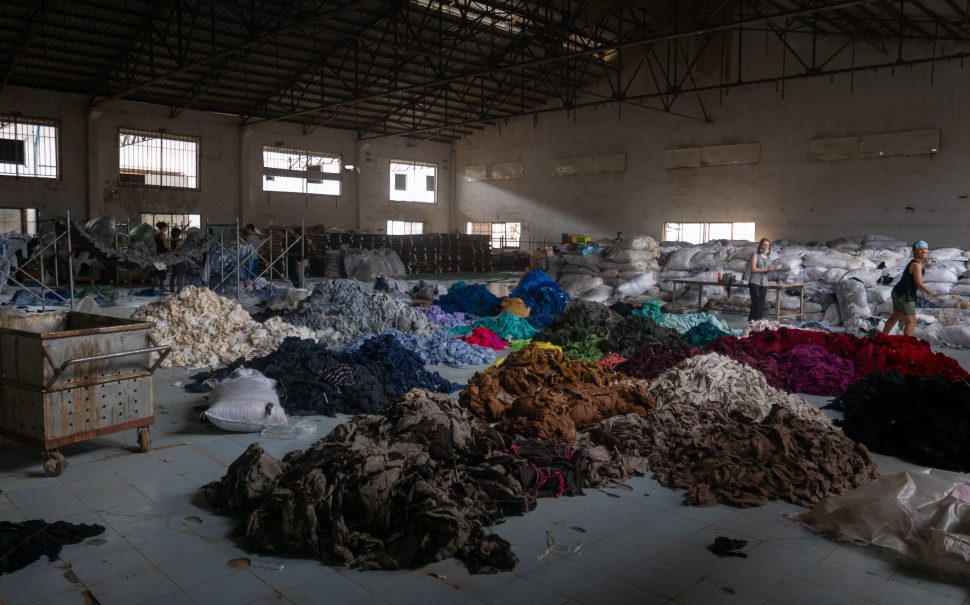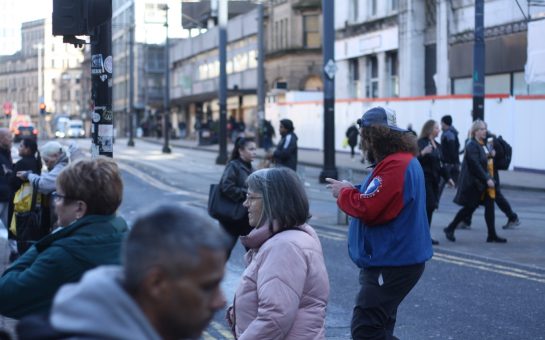“Close to 87% of waste clothing ends up incinerated or dumped in landfill,” says an environmental campaigner – but what can you do about it?
This issue stems from the dangerous practices of the fast fashion industry and the overconsumption of modern consumers.
Fast fashion is a term used to describe a business model in the clothing industry of high turnaround often at extremely low cost.
George Harding-Rolls is the campaign manager at the Changing Markets Foundation, a non-profit organisation which aims to expose irresponsible corporate practices around key sustainability areas, including the fashion industry.
He said: “The majority of clothing, close to 87% of waste clothing ends up incinerated or dumped in landfill.
“The figure rises to near 99% if you include what is called cascaded recycling, which is where you take clothing and turn it into things like rags and stuffing which cannot be recycled.
“There is a huge reliance in the fashion industry on fossil fuels both for powering the manufacturing process but also as a feedstock for fibre.
“69% of all fibre production is fossil fuel derived. The biggest contributor being synthetic plastic fibres such as polyester.”
Clearly there are major long-lasting damages being done to the environment by the fashion industry – but not everyone knows about it.
Mr Harding-Rolls said: “People are very familiar with the plastic pollution crisis in water bottles and plastic bags, but the plastic pollution crisis as it comes from the fashion industry is just as bad.
“They are still ending up in the oceans, they are still ending up being incinerated, with plastic micro-fibres ending up in our ecosystems and by the fashion industry it is very cleverly not seen as such an issue for them.”
This shows the damages caused by the fashion industry but there is still the question of how this happens and what would be the best way to tackle these issues.
“Broadly speaking the reason that things have got out of hand is because of massive overproduction,” Mr Harding-Rolls said.
“People are buying 60% more clothing than they were 15 years ago.
“All of that growth has been accounted for by the growth of plastic synthetic fibres.
“If you tackle them, if you cut them down to size, essentially you are looking at a fashion industry that is much more aligned with what people actually need to consume, rather than just pushing overconsumption.”
Some fast fashion companies have been seen trying to address these environmental issues.
But an investigation from the Changing Markets Foundation against the Competition and Markets Authority’s Green Code found that a lot of green claims being made by companies such as ASOS and H&M were unsubstantiated.
Mr Harding-Rolls said 96% of the green claims being made by H&M through their conscious collection were unsubstantiated, the collection has since been removed from their online platform and from all UK stores.
An H&M Group spokesperson said: “H&M Group has a longstanding commitment to sustainability and continually improving upon its environmental impacts, and we have been proactively working for many years in setting and working towards ambitious sustainability-related targets.
“These goals include and directly address the importance of enabling significant reduction in the use of fossil-fuel based fibers for our products.
“By 2025, the goal is to only source 100% recycled polyester. This is an important milestone on our journey towards only sourcing recycled or other more sustainably sourced materials by 2030. This will help us decrease our impact on the environment, lowering our carbon footprint and saving resources like water, energy and chemicals.”
The same investigation also found issues with the green claims being made by ASOS and their Responsible Edit.
An ASOS spokesperson said: “ASOS took the decision to proactively remove the functionality of the Responsible Edit, including filters, from the website in June as we co-operated with the CMA’s sector-wide review of the fashion retail industry and we informed them of this move.
“We continue to work closely with the CMA as part of its investigation and remain committed to playing our part in making fashion more sustainable.”
Greenwashing is a term regularly used to describe these so-called sustainable claims which often turn out to be unsubstantiated and done purely for the purposes of a company’s image.
“It means very little, greenwashing is just very shallow marketing,” said Mr Harding-Rolls.
“It is very convenient for fashion brands that people are so concerned with the environment and climate change because it means that they have another avenue to sell stuff to us.
“Greenwashing can act like a massive smokescreen where you are just feeling around, you can’t really tell what is right, what is unsubstantiated, who you can trust.
“When you have the regulation on green claims in play it means that there is this filter and only those claims which get through are substantiated and the consumer can trust them.”
Other than trusting the outcomes of these reports and regulations there is one way the consumer can adapt their purchasing to be more sustainable with second-hand buying.
In the past few years there has been a huge rise in the popularity of buying second-hand and pre-used clothing and that is a huge step forward in tackling the climate crisis surrounding the fashion industry.
Mr Harding-Rolls said: “It is quite easy to opt out of the fashion industry, you can almost just stop buying new clothes.
“You can buy second-hand or vintage and learn to reuse and repair and shift your mindset away from the set perception of self-wroth being about buying new clothing and being constantly on trend.”
A potential issue with buying second-hand for many is that it can sometimes cost more because of the processes involved in making the product ready to be sold again.
One company aiming to combat that problem is Manchester-based vintage clothing company Bare Necessities Thrift.
Jack Hogan, the operation director at Bare Necessities said: “Our main competitive angle is the price, that is how we are deviating ourselves from the other companies in the market by being cheaper than them.
“We sell a pair of Levi’s for example for around ten pounds, if you are buying a pair of jeans for like fifteen pounds from ASOS, you might as well get a better product and pay less.
“We are not only cheaper, but we are more ethical.”




